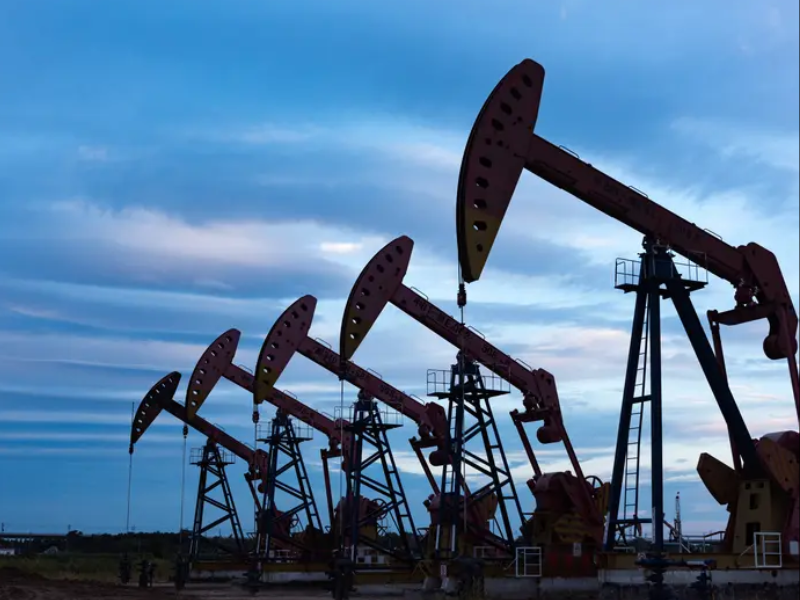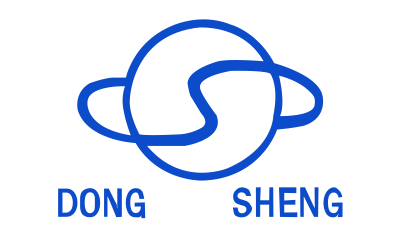Artificial lifting is a process where, when the natural energy of the formation is insufficient to sustain natural flow production, or although natural flow is possible but the production rate is insufficient, mechanical equipment is installed in the wellbore to work on the fluid, allowing it to flow to the surface.
Currently, commonly used lifting methods in oil and gas field development include: sucker rod pump oil production and rodless pump oil production. Sucker rod pumps are further subdivided into beam pumping units and screw pumps, while rodless pump oil production includes electric submersible pump lifting, hydraulic piston pump oil production, and hydraulic jet pump oil production.
The following will compare the advantages, disadvantages, applicable conditions, and current applications of pumping units, screw pumps, and electric submersible pumps.
I. Comparison of Working Principles:
1. Pumping Unit: Sucker rod pump oil production is a lifting method that transfers surface energy to the downhole fluid through the sucker rod and pump.
The pumping unit is the most common type of sucker rod pump oil production. Its reciprocating motion of the suspension point is transmitted to the downhole plunger pump through the sucker rod.
Working Principle: 1. Screw Pump:The power unit transmits high-speed rotational motion to the crankshaft via a belt and gearbox, causing the crank to rotate at a low speed. The crank, through a connecting rod and crossbeam, drives the walking beam to swing up and down. The suspension rope attached to the pump head then drives the sucker rod string in a reciprocating motion.
2. Screw Pump: A surface-driven screw pump is an oil production method where the rotational motion of the wellhead drive head is transmitted to the downhole screw pump via the sucker rod.
Working Principle: Along the entire length of the screw pump, multiple sealed chambers are formed between the outer surface of the rotor and the inner surface of the stator rubber bushing. As the rotor rotates, sealed chambers continuously form between the rotor and the inner surface of the stator rubber bushing at the suction end, moving towards the discharge end and finally disappearing there. Oil is drawn in under the pressure difference at the suction end and pushed from the suction end to the discharge end, with the pressure continuously increasing and the flow rate very uniform.
The working process of a screw pump is essentially a process of continuous formation, movement, and disappearance of sealed chambers.
3. Electric Submersible Pump (ESP): The surface power supply to the ESP transmits electrical energy to the downhole submersible motor via a transformer, control panel, and submersible cable. This motor drives a multi-stage centrifugal pump, converting electrical energy into mechanical energy to lift the well fluid to the surface.
The ESP oil production unit mainly consists of three parts: the downhole unit (comprising the submersible motor, protector, separator, and multi-stage centrifugal pump); the power transmission system; and the surface control system (comprising the control panel, transformer, and junction box).
Working Principle: When the motor drives the impeller on the pump shaft to rotate at high speed, each fluid particle within the impeller is subjected to centrifugal force, thrown from the impeller center along the flow channels between the blades to the periphery of the impeller. The fluid pressure and velocity increase simultaneously. It is then guided to the next impeller stage through the guide channels. This process continues, gradually increasing the fluid's energy through all impellers, eventually achieving a certain head and lifting the fluid to the surface.
The main difference between sucker rod pump oil production and rodless pump oil production lies in the power transmission method. Sucker rod pump oil extraction utilizes a sucker rod inserted into the well from the ground to transmit power to the downhole pump, which then pumps crude oil to the surface. Rodless pump oil extraction, on the other hand, uses cables or high-pressure fluid to transmit energy from the ground to the well, driving the downhole unit to pump crude oil to the surface.

II. Comparison of Main Advantages and Disadvantages:
1. Pumping Unit:
Main Advantages:
(1) Simple equipment, fewer installation and disassembly steps compared to screw pumps and electric submersible pumps;
(2) Robust structure;
(3) Reliable performance and long service life;
(4) Relatively well-established management experience.
Main Disadvantages:
(1) Bulky equipment, inconvenient for disassembly, assembly, and relocation in oilfield production;
(2) Only suitable for shallow and medium-deep wells;
(3) Large footprint, difficult for deviated wells and offshore oil wells;
(4) Poor adaptability to sand, wax, salt, water, and heavy oil.
2. Screw Pump:
Main Advantages:
(1) Lower initial investment. Compared with electric submersible pumps and beam pumping units, screw pumps have a simpler structure and the lowest initial investment;
(2) High pump efficiency, large displacement, energy saving, and low maintenance costs. Screw pumps operate under stable load with minimal mechanical loss, achieving a pump efficiency of up to 90% and a system efficiency of over 50%. The equipment has a simple structure, small size, and is easy to maintain;
(3) Suitable for heavy oil extraction. Generally, screw pumps are suitable for crude oil extraction with a viscosity below 8000 mPa·s, therefore they can be used in most heavy oil wells;
(4) Adaptable to wells with high sand content. Theoretically, screw pumps can transport slurry with a sand content of up to 80%, and can also produce normally even when the sand content in crude oil reaches 40%;
(5) Adaptable to wells with high gas content. Screw pumps do not experience gas lock, therefore they are more suitable for mixed oil and gas transportation;
(6) Small footprint and easy installation. Suitable for cluster wells and horizontal wells in offshore oilfields;
(7) Allows for high back pressure at the wellhead, which can be controlled within 1.5 MPa or higher, which is beneficial for gathering and transportation in remote wells;
(8) When the engine or motor stops, sand settles on the upper part of the pump, making it more likely to resume operation.
Main disadvantages:
(1) The stator is made of rubber and is easily damaged, so the pump needs to be inspected frequently;
(2) The pump requires fluid lubrication;
(3) The rubber of the stator is not resistant to high temperatures and is not suitable for use in steam injection wells;
(4) Improper operation can cause pump damage;
(5) The total head is small, the torque is large, the rod breakage rate is high, and the downhole workload is large;
(6) Wear and collision between the sucker rod and the tubing can easily cause damage to the sucker rod and related components.
3. Electric Submersible Pump
Main advantages:
(1) Large displacement;
(2) Simple operation and convenient management;
(3) Can be well applied to deviated wells and horizontal wells as well as offshore oil production;
(4) Has a certain effect in preventing wax deposition.
Main disadvantages:
(1) The depth of pumping is limited by motor power, casing diameter, and wellbore temperature;
(2) It is relatively expensive, with high initial investment;
(3) Operating costs are high and downtime is too long;
(4) Motors and cables are prone to failure;
(5) Daily maintenance requirements are high.
III. Comparison of Applicable Conditions and Current Application Status:
1. Pumping Unit Application: Pumping unit oil extraction is currently the most widely used oil extraction method in my country, with approximately 60% or more of oil wells using this lifting method.
With the continuous increase in pumping depth and discharge volume, situations such as heavy oil, high viscosity, high sand content, water flooding, and strong corrosion frequently occur. Therefore, oil extraction technology places demands on pumping units with long strokes, low stroke rates, and large pump depths. Many different types of beamless pumping units have been developed both domestically and internationally. The beamless pumping units currently in use in China mainly include chain pumping units, extended-stroke pumping units, and wide-band pumping units. 2. Screw Pump Applications:
Application Scope:
(1) Head up to 1800m;
(2) Discharge up to 240m³/d, pump depth 800m;
(3) Oil properties: heavy oil, sandy, high water cut, polymer flooding wells, etc.;
(4) Well temperature up to 120℃;
(5) Vertical wells or inclined wells with an inclination of no more than 30 degrees.
Screw pumps have broad application prospects and can operate normally in most heavy oil fields and wells with complex working conditions worldwide. As a mechanical oil extraction device, screw pumps have advantages that other pumping equipment cannot replace. Significant progress has been made in manufacturing and application in China, and downhole pumps have basically formed a series.
Currently, Jilin Oilfield, Liaohe Oilfield, Jidong Oilfield, and North China Oilfield all use screw pumps for cold extraction in heavy oil wells. After several years of field practice, good results have been achieved, making screw pumps the main lifting method for heavy oil well extraction. 3. Application of Electric Submersible Pumps (ESPs): Due to their large displacement and simple surface equipment and energy transfer method, ESPs are commonly used in high-yield oil wells and during medium-to-high water-cut periods as an Artificial Lift method to increase fluid production and maintain crude oil output.
In recent years, major oilfields and fault blocks have entered high water-cut phases, leading to a continuous increase in the number of ESP wells.
Correctly determining the pump depth and selecting the appropriate ESP based on well productivity to achieve optimal efficiency, as well as comprehensively understanding the downhole unit's operating conditions during ESP well production and analyzing the causes of malfunctions, are crucial for unlocking well potential, ensuring effective equipment operation, and extending pump maintenance cycles. These are important issues in improving the production management technology of ESP wells in oilfield production.
Currently, buyers have higher requirements for the quality, lifespan, and overall system efficiency of downhole equipment. Our company focuses on the research and development and production of sucker rod pump and related components. Our products have passed multiple quality tests and we can provide reliable configuration suggestions and stable product output.
If you are looking for a reliable sucker rod pump supplier, we are ready to provide you with technical support, selection advice, and fast delivery services. Contact us to find more efficient lifting solutions to boost your oil well production.

